Eleanor
Andersen (nee) Reid
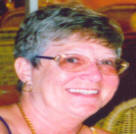

Lived in Kinning Park. Attended Lambhill Primary School from 1948
to 1949, Shields Road Primary to 1956, then ARA to 1959. Went to Langside College
for one year then worked as a shorthand typist and secretary.
Married, divorced, married again. One daughter, one son, one
graddaughter. Hobbies are reading, sewing, going on holiday and
eating chocolate!
Survived
(obviously) lung cancer five and a half years ago. Now fit, but
fat. Trying to lose weight but cannot stop eating chocolate!
Update - February 2010: As my operation for lung cancer was
in September 1996, I have survived for a bit longer than 5½ years
now. Have had to give up chocolate (almost) as I am now diabetic,
caused by a severe viral infection.
Sarah Anderson
(nee Livingston)
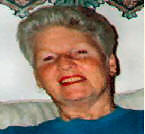
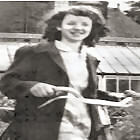
Born in Blantyre, raised in Glasgow.
Schools attended, Scotland Street and Lambhill Street. Attended
Langside College for one year. Moved to Paisley 1954. Moved to
Toronto, Canada 1957. Married, with one son, one daughter, one
grandson, one granddaughter. Retired banker, Hobbies: walking,
swimming, dancing, reading, computers. Would love to hear from
anyone who may remember me from school days, or who lived in the
Kinning Park area.
Robert P. Downie
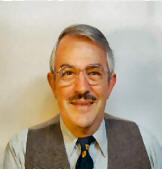
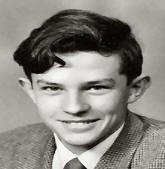
After leaving ARA, I went on to Bellahouston Academy from 1960 to
1963. Then I emigrated with my parents in '63 to Pugwash, Nova
Scotia. I joined Canada Immigration in 1967 and worked at various
centres in the Toronto area and at the Canadian High Commision in
London, England. In 1987, became self-employed Immigration
Specialist/Consultant, assisting and representing clients as Counsel
with their applications and procedures both here and overseas at our
Visa Offices. Married to Jean since 1967, we have three sons and
three grandchildren (including twins). We live in Oakville, Ontario.
John Sayers (Iain)
Henderson
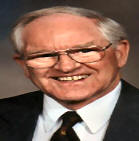
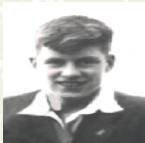
Born in Glasgow. Attended ARA 1946 to 1951. National Service 1951 to
1953 (Germany). Emigrated to Canda 1955. Married Muriel Paton (known
since childhood) in Canada 1956. Three daughters, three grandsons.
Started on assembly floor, and worked through many positions in
factory and offices for same manufacturer of electrical distribution
equipment for 43 years. Took various university level courses in
accounting, sales and marketing. Spent 30years in International
Sales, growing business from zero to $18 million annually. Retired
in 1997 as Manager, International Sales. Business and recreational
travels have taken our family around the world. Favourite places,
(apart from Scotland), are New Zealand, Chile, and Costa Rica. Now
live in Wingham, Ontario. Enjoy travel and theatre, golf, garden,
church and various masonic lodges. I'd like to hear from Ralph
Davidson, Frank McCann (Forth Street), Agnes Anderson (Nithsdale
Drive).
Ian Pearson
McDowall
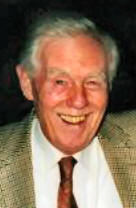
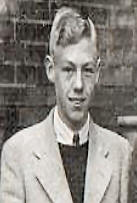
Born Kelvingrove, Glasgow. Attended Melville Street 1930-37, "Big
School" 1937-42. Degree course in Metallurgy Royal Tech. College,
Glasgow 1942-45. Graduated B.Sc. (hons.) University of Glasgow 1946.
Worked as Metallurgist, various companies until 1971 (Fellow of
Institution of Metallurgists 1969). 1971 became Director in Head
Wrightson Steel Foundries Ltd. 1980 left industry to teach Physics
in 6th form college. Retired 1988.
Married Yvonne 1949 (died 1983) 3 children, 10 grandchildren.
Travelled fairly widely in Western Europe and North America.
Hobbies: golf, reading, theatre, cinema, art galleries. Would love
to hear from survivors of the pre-historic days in ARA - some names
- Bob Anderson, Isadore Lyons, Edward Guinness, Frances Hamilton,
Marion Campbell. Now lives in North Yorks. England. Visit Scotland
2-3 times a year.
Pat Bisset (nee
Burns)
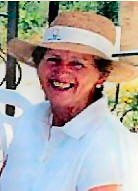
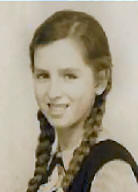
Attended ARA 1940 to 1947. Left at age fifteen to attend Miss
Allpress's Secretarial College, Pollokshaws. Then worked in Glasgow
as secretary to one of the directors of House of Fraser. I have been
married to Edwin (a Fifer) for 42 years and have three daughters and
six grandchildren. We left Glasgow in 1960 and gradually moved
further south, living for short periods in Doncaster, Wolverhampton
and then to Surrey, where we lived for 30 years, before reitiring to
the Algarve where we live most of the year. My hobbies are golf,
gardening and trying to learn to play bridge. I would love to hear
from Maureen Livingstone, Sheila Smith (emigrated to Canada way
back) Bridget Gumprig, or anyone who remembers our class.
Larry Bureau
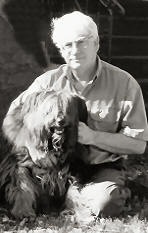
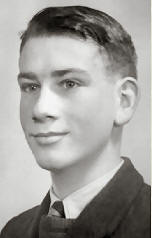
After Pollokshields S.S. 1954-58, completed apprenticeship training
in Lithography. Married and moved to South Africa for about eleven
years. Joined South African Police Force (was always too short for
Glesca Polis). Then to Canada. Set up Commercial Art and Design
Studio. Next, to Toronto to take on production/art direction of a
new regional magazine. Later to Alberta, U of A faculty of
Education, vocational Ed and Edtech. Set up and developed an
apprenticeship program in Graphics Arts for Alberta government.
Currently with Northern Alberta Institute of Technology, Edmonton.
My Canadian wife is also a college prof. at a rival institute. We
have four children, five grandchildren, three cats and one very
shaggy dog named Ceilidh. My hobbies include building model boats,
graphic design and computers. I'd love to hear from Margery Watts,
Anne Summers, Stuart Smith, Kenneth Henderson, John MacIntosh, John
Niven, Walter Whitehill, Wee Wullie Clugston et al.
Ed: I am deeply saddened to report the death of Larry in October
2009. Our group will miss this fellow student, a kind and honourable
man.
William (Billy)
Kean
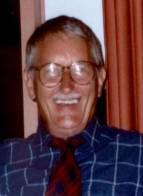
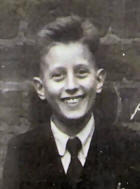
Born 1942 and raised in Kinning Park. Attended Kinning Park Public
School near the Plantation Park end of Scotland Street. Moved to
Melbourne, Australia February 1971, met my wife Agnes, a Scot, and
have two daughters, Jennifer and Allison, 24/19 years. Still keep in
touch with my daughter and son in Scotland from a previous marriage.
Love reading and have written poetry since 1962 and in 1985 had a
wee book of poems published called, "Stirrings of the Heart". One of
my teachers at Kinning Park was Miss Bain who introduced her pupils
to poetry by reciting 'Schule (School) in June' written by her
father, Robert Bain who was a published poet. When I wen home in
1976 to visit my sick father, who died that year, I visited Miss
Bain's home in Keir Street, (the street that is the boys' playground
entrance to ARA). She complimented me and gave me a couple of her
father's poetry books. I became a Baha'i in 1975, and now being 60
would like to track down as many former pupils known to me, just to
make my life complete.
Gilbert Wilson
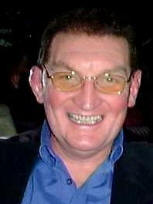
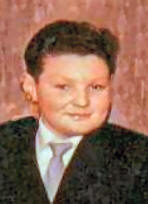
Initially lived in Houston Street, Tradeston and attended Shields
Road Primary. Moved to Herriot Street, Pollokshields when I was nine
and attended Melville Street Primary until 1958. Teacher, Miss
Paterson, was a bit of a tyrant but instilled in me a love of
reading. Went to Pollokshields Secondary until 1961 where my
performance was abysmal and was virtually thrown out. Latin teacher,
Mr. McPhail, told me I had gone "ad canes" (to the dogs).Fortunately,
got a grip of myself and got HNC in engineering at technical college
and eventually a degree in Mechanical Engineering from Strathclyde
University. I must have been a late developer. After uni, worked in
Zambia for Anglo American where I met my wife Pat to whom I've been
married for 31 years and have two children. All the way to Africa to
meet a girl from Nottingham! Then worked for Bass Breweries for 28
years in Scotland, England and the Czech Republic. Took early
retirement, stopped playing rugby 2001 at age 55, and now just
chilling in Loughborough where I am the unpaid caretaker of the Elim
Pentacostal Church.
Tom Berman
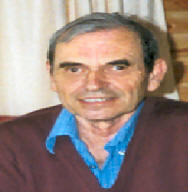

After I left ARA and Glasgow in 1951, I spent a year on a farm in
Berks., then went off to a kibbutz in Israel. I did my army service
there and went to study in the U.S....(why, and how, is a long
story). I spent four years at Rutgers U. in New Jersey, followed by
four years at MIT in Cambridge, Mass. Ended up with a PhD in
microbiology, one wife and two and a half daughters when we went
back to the kibbutz in 1964. Been there ever since with occasional
time off for Sabbaticals in exotic places like Western Australia,
Hawaii, Chile, France and assorted parts of the USA. If asked what I
do, I call myself an "aquatic microbiologist". For much of the last
35 years I was the Director of a limnological (i.e. lake science)
research lab on the shore of the Sea of Galilee (here called Lake
Kinneret and a major source of water for this country). Now and
again I also had a chance to do some marine microbiology. I am now
officially retired but I still work as a "consultant", so I have an
office and lab to mess around in. Just published a collection of
poetry (Shards, a Handful of Verse, Writers Club Press). Still have
the same wife after 42 years, 3 daughters, 5 granddaughters and one
grandson.
ed. note:
to read Tom's account of the Winton Train reunion in September,
2009, scroll down.
We are saddened to say that Tom passed away in April 2013 at the age
of 79. He will be sorely missed by many of us on this site.
Norrie Henderson
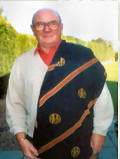
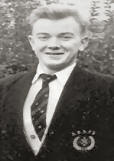
Did my national service with the RAF in Hong Kong. Got married to
Sheena in 1962 and we have celebrated our ruby wedding anniversary
this year. We have two sons and one grandson.I worked at St. Andrews
University as the Pensions Officer for twenty-five years until I
took advantage of an early retirement package in 1993. Since then I
just play golf six days a week and we take Spanish holidays in order
to seek out the sunshine. Life is pretty wonderful!
Douglas Carrick
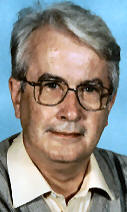
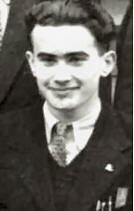
Son of James BF Carrick, jannie at ARA 1949-52. Lived in the
jannie's hoose, which was the groung floor flat in the close nearest
the school on Keir Street...difficult to be late for school! Then
moved to Newlands when my Dad died. Still attended ARA....a long
trek! Got into CA apprenticeship in 1958, but after three years,
decided that earning money was a better bet. After a short spell as
an accounts clerk and management trainee I was advised to become a
computer programmer. Can't remember name of who advised me, but he
knew what he was talking about. Most of my life has been in the
computer industry, latterly as Quality Manager, with a short side
step to House of Fraser (for retail experience). Married, divorced
and married again, much of my time spent south of the border. My
main pastime is the theatre and I have sung and acted in musicals
and plays. Have also directed and written plays, under the name
David Welsh, (nine plays published). Now retired and helping out
with Meals on Wheels so I can suss out the best retirement flats in
Formby.
(ed. note: Sadly, Douglas passed away July 2005)
Velma Livingstone
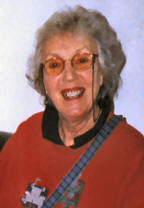
I was Velma Livingstone and lived in Maxwell Road, a stonesthrow
from the school. So near, that in air raid practice I had to run
home down Keir Street, accompanied by two "big boys" Isadore Lyons
major, and his cousin Isadore minor. I remember the following
eachers.... gym/hockey, played on the square, Miss McGavin. History
and English, how we had to learn Midsummer's Dream, Miss Hay. Music,
Miss Souter. French, learning the Marseillaise, Miss Bryson or
Bannerman. Science, Mr Bernstein. Maths, "stand the girl who's not
here", Mr. King, Mr. Ross. Headmaster, Mr. Hamilton. Here are some
pupils....Irene Paterson (who lived in McCulloch Street), Irene
Dennison (a good swimmer), Suzanne Edmiston, Olive Aitken, Myra
Chapman, Jenny Stuart, Sula Friedlander (lives In London), Grace
Simmons (lives in USA), Sheila Black. I married Joe Lazar from Wales
in 1950...widowed in 1985, live in London near our three children.
Hope all had a lovely time at Reunion.
phone: 020 8446 7795
George Graham
Allan
Dear ARA Alumni
This is a note from George Graham Allan who was a student at ARA
from 1942 until 1948. I am now Professor of Fiber & Polymer Science
and Professor of Chemical Engineering at the University of
Washington in Seattle, Washington.
My elder brother Frederick James Allan II (now deceased) was also a
an ARA student from about 1934 until 1939 when he entered Royal Navy
Research in England.
It was fascinating to read about the Pollokshields reunion on the
ARA website and see quite a number of names that I recall. It would
be helpful if there was a list of email addresses so that one could
contact former classmates easily. My email address is create@u.washington.edu
and I would be delighted to hear from any of you. If you are in the
Seattle area please telephone me at home, 425 485 7249 or 425 486
1648 or fax 425 486 3348. My work no. is 206 542 1491. You can see
me on the internet by looking up the Chemical Engineering Dept. of
the University of Washington in Seattle. Don’t confuse it with the
University of same name in St. Louis.
It is quite amazing the number of names from so long ago that one
can recall so clearly. I have been interested in the chemistry of
memory and how can those names be stored for so long without much
deterioration ?
Some of the students whose names flash instantly back are Yvonne
Barnett, Beatrice Swan, Margaret Ross, Shelagh Foster, Edna Nelson,
Pat Samuels, Elspeth Harris, Doris Wilcox, Nan Grey, Margaret
McClure, Rita Boyle, Claude Cowan, Monty Landstein, Sam Leckie, John
White, Stanley Mason, Hans Burien, Hugh Sanderson, Hugh McCall, Tom
Gunn, Raymond Bremner (somewhere near Toronto ?), Tom Hobson, Alan
Marks, ? Bergman, Gordon Young, Campbell Love, Fred Wilde, Glen
Hardie, Felicity and Derek van Heerden, my very good friend Gordon
Moore (now deceased) as well as those listed as attending the
reunion. I am not now in touch with any of these except Hugh McCall
(lives at Glenfinart, 44 Sherbrooke Ave., Pollokshields) though I
believe Monty Landstein changed his name and appeared in some
movies. He certainly was on the stage in Glasgow.
Our collection of teachers was quite bizarre but did an amazing job
which now being a professor I look back upon with fondness. Hamilton
was the headmaster, then the charming MacEwan, then Weir as I
recall. I had some severe brushes with Sammy Weir because he would
never entertain the idea of ARA having a soccer team which the boys
wanted …. only rugby had the requisite snob value. That brings to
mind the gym teachers, Sam Ritchie and the statuesque Miss McGavin
who dragged any reluctant male dancer to the floor to cavort with
her during the joint gym periods near Xmas. I never had that
pleasure because I did enjoy and still enjoy Scottish Country
dancing and the Tango. Miss Bryson and Miss McCance taught French
valiantly but why we never spoke French in class is still a mystery
to me. We could construct complex if and when sentences, read Edgar
Allen Poe in French , write poetry in French but we never SPOKE to
one another It would be nice to meet them today and say Bonjour,
c’est une plaisir de vous voir de nouveau. I have had graduate
students from France, the Congo and Martinique, so now I can
converse a little. How pleased they might be to see that all their
efforts were not in vain.
Other teachers that spring to mind were Miss Scott , Bernstein and
lastly Inverarity (Science) as well as Moffatt, Young, King and Ross
(math). Poor Teddy Ross, a shell-shocked WWI veteran, was treated
shamefully by some of the boys who did unflattering impersonations
of his idiosyncrasies behind his back. An appreciation to him for
all he suffered for his country would be well merited. Yuile and
Miss Hays in English/History will always be remembered. The former
because he frequently wore his pyjama jacket with its large buttons
as a shirt and sneaked out to catch a tram at 3.45 leaving the bible
15 minutes unattended. Miss Hays always reciprocated one’s interest
in History. And of course, Miss Soutar in music. Since I sometimes
am invited to teach high school students as a guest I now appreciate
what a gang of ruffians the ARA boys could be. What an opportunity
missed to learn more about music theory. No wonder the strap (the
illegal Lochgelly Special) was occasionally required. We also had
Dorian for Latin for a time but I can’t recall his predecessor. Miss
Baxter in Art was a committed teacher and ultimately had a male
colleague (Stevenson ?) but I can’t recall his name for sure.
There was also an older white-haired lady whose name escapes me who
came in temporarily during the War Years to teach English. She was a
superb actress and made the Macbeth witches and Shakespeare really
come alive.
Finally let’s not forget the janitor who lived in the close in Keir
St. next to the school and whose main aim in life seemed to be to
prevent the boys using the school playground after classes were
over.
As for myself I went from ARA to the Yoony and the Tech. in
Chemistry and Chemical Engineering. While a graduate student I
taught at the University of Paisley in the evenings. After
graduation with First Class Honours in 1952 and a Ph.D. in 1955 I
took a position with the DuPont Company in the USA for an intended
couple of years (later six to be precise) which turned into a
lifetime. After a transfer from Wilmington to and a very brief stay
in Niagara Falls (too snowy in Winter) I moved to the West Coast and
joined a giant pulp and paper company called Weyerhaeuser for four
years. From there I returned to teaching and research at the
University of Washington in 1966 and have been there ever since. In
1970, I received the first Doctor of Science degree awarded by the
University of Strathclyde for Distinguished Research in Fiber &
Polymer Science.
There is no compulsory retirement age in the USA and I am still
teaching. At the moment it is a class on Creativity & Innovation
with 255 students. It is has been rated one of the five courses at
the university which should not be missed. This gives me the
opportunity to influence some wonderful students and I get a great
kick out of that.
All the best to all the ARAians.
GGA
Glenn M. Hardie
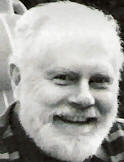
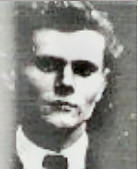
I attended Primary
and Secondary school at ARA, between 1936 and 1949. For the first
half of that period I lived on Kenmure Street; the family then moved
to Newark Drive. I was not a prize-winning student at any point; I
would be better categorized as average to indifferent! My only claim
to school fame was that I was made captain of the swim club in 1948
after winning a bronze medallion in life saving (which came with a
free pass to the public swimming pools).
After graduation, I was drafted into the Army for two years. I later
qualified as a Chartered Surveyor. In 1958, I emigrated to Canada,
where I obtained successive positions with several agencies in
Vancouver, B.C. In 1967, I joined the faculty of the Building
Program at the B.C. Institute of Technology where I taught
construction economics and also served as Program Head for 5 years.
From 1990, I taught project costing in the School of Architecture at
the University of B.C., until compulsory retirement in 1995.
I have earned two university degrees, one in philosophy (BA) and one
in adult education (M.Ed). I have had 4 books published (3 on
building technology and 1 on humanism). I also volunteered on
committees related to my work. A life-long interest has been playing
piano, mostly by ear.
In 1965, I married Lorraine, a Vancouver woman, and lived happily
ever afterwards. We have two grown children, Lindsay and Karen.
Since leaving ARA, I have traveled extensively, to Australia, most
of Britain, China, Costa Rica, parts of Europe, Fiji, Hawaii, Hong
Kong, Japan, Mexico, New Zealand, Panama, to most Canadian Provinces
and half of the United States.
Commander Donald
Clark
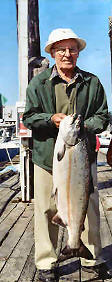
Shown at right in
British Columbia at the age of 87, with his catch of the day, a 28lb
salmon, passed away at the age of 92, on January 12, 2007. Following
is an obituary published in The Herald (Glasgow) on January 22,
2007.
"The last link to Clydebank's founding family, Commander Donald
Clark CD RCN, has died. He was 92. Born in Pollokshields, Glasgow on
September 7, 1915, he died on January 12 at Saanich Peninsula
Hospital in Canada.
Clark was the son of
Dr, Donald Clark MB ChB and Esther Thomson, and the last surviving
grandson of James Rodger Thomson of J & G Thomson Shipbuilding
(later John Brown Shipyard) of Clydebank.
With the sale of
Thomson's shipyard to John Brown, of Sheffield, in the 1920s, the
extended Thomson family began to break up. Dr. Clark eventually
settled and remarried in Salonika, Greece, where he founded Harman
Keiu Hospital. The effects of both diabetes and malaria ravaged Dr.
Clark's health and he and his new wife moved to Australia, where he
died in 1928.. Esther and the couple's children moved to Canada in
1928 and settled in Montreal. It was there that Donald was placed in
Weredale House Orphanage for Boys in 1929. He stayed at the
orphanage until 1933. By 1938, he had worked for RCA Victor and the
Foxboro Instrument Company in Montreal and was training as an
apprentice electrician. In 1940, he joined the Royal Canadian Navy
Volunteer Reserve and, after receiving his journeyman's papers,
worked on radar at the National Research Council before transferring
to the Royal Canadian Navy in 1945.
His work with the
navy led to an involvement in shipbuilding and he helped to write
the manual for principal naval overseers as well as overseeing the
building of HMCS Nipigon and HMCS Bras d'Or in Sorel, Quebec.
Clark had come full
circle from the founding of the family shipyard of J & G Thomson in
1840 by his great grandfather, George Thomson, to overseeing the
building of warships for the Royal Canadian Navy in the 1960s.
Clark retired from
the RCN in 1966 and became a successful estate agent in Victoria,
Canada.
He gradually retired
from his second career to care for (sic) full time for his wife,
Phoebe, who had suffered a severe stroke in 1975.
Clark is survived by
his daughter, Anne. Phoebe died in 1984, and their son, Grant, in
2005."
Ken Anderson
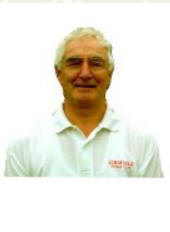
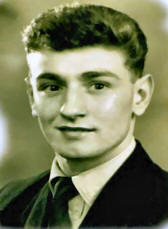
Attended ARA 1950-55. On leaving joined the Royal Air Force for
National Service. Then J & P Coats Ltd, at their Head Office in St.
Vincent Street, Glasgow. Worked there for some seven years as a
shipping clerk. Moved to the oil industry where I worked for
Gulf/Chevron for 30 years in Glasgow and Edinburgh in marketing
administration. Retired in 1993. Worked for Glasgow District Council
Social Work Department for 4 years at the Gorbals Addiction Project.
Retired in 1997 and moved to Haywards Heath, West Sussex where I
live presently. I have a son and a daughter both of whom live with
their families almost within a stones throw. Both have two children
altogether three girls and a boy. I have been married to my wife
Shirley for 46 years. My hobbies are - summer -lawn bowls, winter -
building web sites. Would be very pleased to hear from any of my old
school chums, at haywardlad@tiscali.co.uk
Deana Henderson
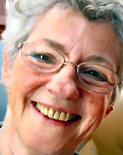
Born Queen's Park area, Glasgow. Attended Melville Street and ARA
1945-1957. Attended Langside College, then left Scotland for Canada
in 1959. Now live near Toronto. Married with three children and two
grandsons. Retired editor. Hobbies are painting, writing and
creating web sites. Heard from primary school pal Isabel McGibbon
through the site and May Young from senior school, now looking for
any mention of Angus McKinnon.
Tom Berman -
September 2009.
I recently returned from a truly unique experience. Together with
Ilana and her two oldest daughters (Shaquede and Denny), I spent
four days on the Winton Train. This was a reenactment of a
Kindertransport train from Prague, across Czechoslovakia, Germany
and Holland, then by ferry to Harwich and Liverpool St. Station in
London. The train, hauled by steam locomotives and with pre-War
coaches, left on 1st Sept. 2009, exactly 70 years to the day when
the last Kindertransport from Prague, loaded with about 250 children
did not leave Prague station; that morning German forces invaded
Poland and WW2 began. (Of the children due to leave on that train,
only one survived the War, and she was on board the 2009 train).
As you probably know
the Kindertransport “operation” from Czechoslovakia in 1939 was
organized by Sir Nicholas Winton, and those of us who owe our lives
to him consider ourselves “Nicky’s children”. (Of course, there were
others involved in organizing and running the Kindertransport from
Czechoslovakia in1939. Some names that are rarely mentioned but who
should always be remembered in this connection: Doreen Warriner,
Trevor Chadwick, Bill Barazetti, Elizabeth Wellington, Josephine
Pike, (in Prague) and of course, Nicky’s mother, Barbara (in
London). And then, we must wonder at and remember our parents who
had the unbelievable courage and fortitude to send us off on these
kindertransports).
About two years ago, Zybnek Honys, the Head of Public Relations for
Czech Railways heard about the Winton story (it is very well-known
these days in the Czech Republic) and conceived the idea of
reenacting a Kindertransport Train, complete with pre-War steam
engines and carriages. The theme of the exercise was “Inspiration by
Good” and the Winton Train quickly evolved into an international
educational project with competitions being held for school and
university students to create works (writing, graphic arts and film)
inspired by Winton’s acts in 1939. Despite huge difficulties in
obtaining sponsors and adequate funding, and almost insurmountable
logistic problems, Zybnek and his team managed to pull it off.
There were 22
original “kinder” on board, plus family members, plus Nicky’s
daughter Barbara and her son and daughter, plus students who had won
places in the competitions, plus the project organizers, plus Czech
and BBC TV crews, plus (very importantly) a great jazz band and the
Hungarian crew that manned the old-style dining and piano-lounge
cars. In all about 150 people.
On the first day, we
traveled from Prague to Nürnberg; next day on to Cologne; the third
day we crossed into Holland to Hook van Holland and then overnight
by ferry (the only modern means of transport used on the trip) to
Harwich. From there to Liverpool St. Station, where the train and
its load of kinder etc was met by Nicky Winton (and some others of
his “children” who were unable to make the trip, plus a host of
family members journalists, photographers etc. Our daughter Ora was
also there, having flown in from New York the day before). After a
fairly brief but quite moving Press Conference on the platform, we
were taken in pre-1939 London buses across town to a reception at
the Czech embassy. All along the way of our journey people had come
out to wave as we passed by. At our stops (Nürnberg, Cologne, Hook
van Holland) we had been greeted by city mayors and other government
dignitaries as well as media people and well-wishers.
Because I knew that
were to be spending ten or more hours each day on the train, I had
brought along books and reading matter. I never opened a single
page…there were just so many people to talk with, so many
interesting stories to hear. Of course, there was much sad nostalgia
and grim memories for the original “kinder” and their family members
but it was really quite a joyous occasion. The fact that we had
quite a bunch of young people on board, including my granddaughters
livened up the proceedings as did the jazz band. I don’t think that
anyone regretted coming on this extraordinary journey.
I cannot begin to
recount all the amazing tales and coincidences that cropped up on
the trip…but here’s one. There was one of the original kinder on
board who was a year younger than me, i.e. she was about 4 years old
when her parents sent her off by herself on the Kindertransport in
August 1939. Now, on this trip she met for the first time, the woman
who as a 16 year old had taken care of her on the original trip! (I
had hoped maybe to discover who looked after me in 1939 but in
vain). So much for a glimpse of the Winton Train experience.
I had another “Nicky
Winton” related trip this year. In May I flew to London to take part
in a celebratory reception given at the Czech Embassy to mark
Winton’s 100th birthday. About 25 of his “children” showed up for
this, including 5 or 6 from Israel. There were a few short speeches
the best of which was from Nicky himself. Of course there really was
not much chance of talking to him quietly on this occasion, but a
couple of days later I went so see him at his home near Maidenhead
and had a very good relaxed visit.
David Jackson
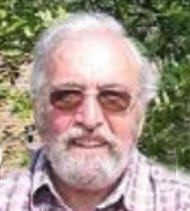

I started at ARA in the Albert Drive kindergarten in 1940 when I was
5, moving to Melville Street a year later. Miss McCance or Miss
McKeith (I can’t remember which) tried to teach us French but had an
unfortunate lisp which didn’t help our pronunciation. From June 1944
we followed the Allied invasion in small maps in the Bulletin with
their help. We were taught “La Marseilles” in French (I still
remember the words to my wife’s astonishment) and Brahms Cradle Song
and “Silent Night” in German - which on reflection was a rather odd
thing to do. There was also the personable Guernsey-born Miss
Albiges who looked after the top primary class with whom I kept up a
correspondence for years, as I think did many others.
We all returned to Albert Drive having sat the Qualy. Names that
come to mind are Mr. Young, Mr. Bernstein and Miss Brown. There was
also Mr. Dorian who gave 30 of us the belt for being late after
lunch because we were watching prefabs being built.
I finally left when I was 16 in 1951 and developed a lifelong
interest in the theatre over the next two years. When I went off to
do National Service in 1953 I was stationed at RAF Headquarters in
Germany where in a former large spa hotel there was a lovely small
theatre. People I met and put on plays with there are still amongst
my closest friends. After I was demobbed I returned home and worked
in the evenings at the Glasgow Alhambra. One of the dancers in the
panto that year became my wife - 51 years ago.
I worked at the Royal Opera House for 12 years. We lived in Surrey
where our three children were born and moved back to Glasgow in 1975
when I was given the job of reopening and managing the old Theatre
Royal – where I’d appeared in the Boy Scouts Gang Show at the age of
16.
I was delighted to be able to attend the 2003 reunion and meet up
with many of my former classmates. One of them was Tom Berman who
was in the same class as me from age 5. We knew he had come from
Czechoslovakia but weren’t aware of how he ended up in Glasgow. We
now know about Nicholas Winton and when Tom spent a day with us
earlier this year, he told us he was booked to go on the Winton
Train. What a stirring and emotive tale that is.
Now living in Sussex, we have six grandchildren all living in
Scotland – so we do a lot of travelling up and down the country. And
we now have a great-grandchild on the way – due in December 2009.
Well we did marry young in those days!
William Hepburn
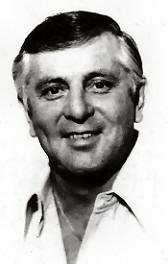
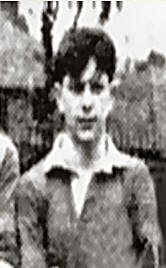
Left for USA 1960s to work in Boston.After 2 yrs in Canada &5 yrs
S.E. Asia in oilfields. Then I returned to Boston area where my wife
& I have settled in the town of Hull,.Ma, Scrolling the pics I
remember some F.P.s.,Ian Buchanan, Alty Ramsay,Fred Smith,Martin
McDonough,HarryCampbell, a very nice girl Louisa Kilpatrick, nee
Dimeo.I also remember Hunter MacMillan, Ronnie Yuill, John MacLeod,
Joe Letters (left for U,S,A,1949), Iain Henderson, boy all teachers
said"most likely to succeed", to name few. Teachers I remember-Big
Bill Young who married Miss Brown, Mr.Glen,Mr Nicholson,Mr
Binnie,(all Eng.), Lat.Miss Agnew & Mr Dorian, Hist.Miss Hay &
MissScott, Music.Miss Soutar, Art.Miss Henderson & Mr Stevenson,
Hist. Miss Hay & Miss Scott, Science.MissScott, Mr Bernstein & Mr
Inverarity, French Miss Bryson & Miss Lindsay. Not to forget good
old Teddy Ross. I hated school then & I couldn't leave quick enough.
How I wish I was back there right now. Yours, Billy Hepburn
Ian Hannah
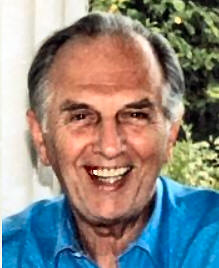
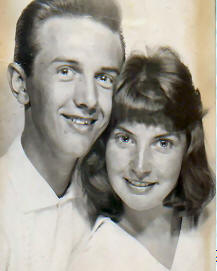
After leaving ARA in 1958, I studied electrical engineering in
Paisley, then London, before going to Canada. My work involved
assignments in various places, from Dallas to Moscow, Washington to
Stockholm, Caracas to Rome, and many others in between.
I have lived in
London, Montreal, Vancouver, Willimantic (Conn), and am now based
near Dunfermline, Fife. I have been involved in Quality Management
Innovation since 1967, (in Canada, USA and Scotland, as a Quality
Manager, Quality Consultant, then as a College and University tutor.
Having earlier
graduated "P.Eng" in Vancouver, B.C.,I returned to Scotland with a
U.S. company in 1972 to help start a new company making specialist
cables for computers. I took a technical teaching course at
Jordanhill College, Glasgow in 1980, then taught industrial
management at two colleges before accepting Prof. Moore's invitation
to take up the post of Director of Programmes at the newly formed
Scottish Quality Management Centre at the University of Stirling in
1990.
Eight years later, I left the University to create SQMC Ltd., a
private company dedicated to the provision of cost effective
management training and consultancy.
Would love to hear from anyone who knew me at ARA.
Ian.Hannah@SQMC.co.uk
www.SQMC.com
Ian Newlove
I lived in Maxwell Drive from 1943 until around 1950/1. My initial
memory of school is of my mother and aunt taking me there on my
first day in 1944. There after I was given a penny each day for my
fare on the No 3 tramcar which stopped on Albert Drive at the end of
Matilda Road. I was taken to the tram stop for the next couple of
days then left to get on with it. I recollect Miss Munro and Mrs
Mcphail as kindly ladies and my time at the primary school was happy
and productive. I also remember that one of the classrooms had a
stepped arrangement for desks, I think it was used by infants in the
final year.
I soon worked out
that by walking to school and home again I could save the fare and
buy a penny worth of broken biscuits from City Bakeries across the
road from the school. During that period of austerity this was a
real treat.
I also recollect
walking from Melville Street past the railway station and the tram
sheds to get to the Church Hall at the end of Albert Drive where
school dinners were served. If we were really lucky we were given a
few ball bearings by the men in the tram factory which we could use
as marbles.
On one occasion I
recollect a train full of American troops sitting in the station
some of whom threw packets of chewing gum out on to the platform for
us. I also remember walking in file to church on Monday mornings for
our weekly service.In senior school, the time in church was often
viewed as an opportunity to catch up on unfinished homework.
Having achieved the
require standard in the 'Qualy' I returned to Albert Drive and
vividly remember several of the staff and having a pretty good time
all round. I have been eternally grateful to all of them for their
efforts in educating and trying to make me a responsible citizen.
There was one occasion when 3 of us (boys) were summoned to the
Headmasters' office. The reason for the call was a lady reported a
boy in ARA uniform had remained seated downstairs in the tram
leaving her to stand. We were identified as a group because of the
route the tram travelled and were the three most likely to have been
involved. The case remains unsolved!
Unfortunately health
issues meant I missed several weeks of important schooling and I
then decided that I would rather work than go on for another year to
my final year, a decision I have regretted ever since. I did
eventually overcome the set back and have lead a pretty good life
one way or another. By chance I am on the periphery of the education
system in that I chair Admission Panels and Review Panels for three
local authorities in the Berkshire area .Something that,almost by
accident, I became involved with on retiring at the end of 1999.
The staff I remember
in particular are Mr Inverarity, Mr Binnie, Miss Gertrude Scott ,
Ollie Brown and Mr Bell. Somewhere a Mrs Routledge ,who I think was
Austrian, was involved in English and teaching us how to write.She
did this holding our hand and moving it with the pen to produce the
flowing lines demanded.
As someone else has
said, Mr Inverarity did not allow any nonsense and as well as the
effective use of a metre ruler over the knuckles, his aim with the
wooden duster was unerring. If he heard a noise he threw the duster
without turning round. His accuracy was attributed to enhanced
senses as the result,reputedly,of having been a PoW of the Japanese.
Mr Binnie was said to
have been a pilot with the RAF and was prepared to regale us with
stories provided we were well behaved and finished our work before
the end of the period.That happened on most of his lessons.
We thought Miss Scott
had a French accent and presumed she was French. Miss Scott made
learning interesting as well as giving an insight to French customs
and France. I subsequently maintained an interest in the language
and followed up at further education with some very happy times in
France all of which I attribute to Miss Scott.
Mr Brown was quite
different to any other teacher and he spent a good deal of time
indoctrinating us with the ethos of Scottish Nationalism . I believe
he went on to be an official of the SNP.
Mr Bell was fun but
took badly to those who misbehaved or shirked.The punishment in the
gym was the option of a 'sand' shoe or the end of the knotted
climbing rope. If you 'forgot' your rugby or running kit when at the
sports ground then 3 laps of the playing field was the norm!
Unfortunately he was
not too interested in soccer which most of us would have preferred
to rugby, however when he accompanied us to away matches we did see
another side to him, and these trips were enjoyable experiences.
Mr Glen was a
gentleman and endlessly patient with us as was Mr Yuill.
My cousin,Gregor
Egan, followed a year behind me through primary school. He went on
to Allan Glens' school.
I also have two
younger sisters Mhairi and Norma who were 2 and 4 years respectively
behind me.They left to attend Shawlands as the result of us moving
house around 1950. I was unable to identify either in photographs
and have asked them to check to see if they are included anywhere.
imnewlove@aol.com
Vivienne Friendly (nee
Simmons)
Reading some of the memories, particularly of classmate David
Jackson, brought back isolated incidents, not all of them good. In
the 5yearolds' class in the Albert road building, my elder sister
Grace, who was a prefect and later head girl, was called in because
I couldn't count my dots. I loved the oil cloth banners on the walls
with pictures of animals and alphabet letters. Kathleen Herron wet
the floor and they put a chair over it...we WERE the babies
class..... Melville St School, singing "all things bright and
beautiful" in Miss McPhail's class. Miss Albiges who had come over
from Guernsey with refugee children during the war, and who told how
when the cows in Guernsey got into wild onions in the fields, the
milk would be flavored with onions....blowing ink balls through the
drinking straws, and folding the flattened waxy straws over so that
they made a satisfying snap when quickly straightened
out......children with "purple stuff" on their hair and heads:
gentian violet for lice? The stinky air raid shelters, and
obligatory singing to keep our spirits up. I visited after school a
classroom where my big sister was in a group knitting "comforts for
the troops": balaclava helmets and gloves and socks. I think Miss
McKeieth monitered that class, or did she trade with Miss McCance?
Waiting for the number 3 tram at Melville St, where some of the boys
teased the man whose actions were bizarre, the man they called
"Dopey", probably shell shocked from the first world War. I am so
sorry, "Dopey", whose name I never knew. Maybe some others remember
you, so you still live on. Poppy Day, where everyone acted sadly in
front of the memorial board of "Old Boys" from the other war to end
wars.... The physical exams in the office, where it was discovered I
had acute scoliosis and had to go to Scotland Street clinic to pick
up marbles with my toes, while dressed only in my underwear, and
afterwards wore a kind of "liberty bodice " brace to straighten me
up, which it didn't. I am now a little 80 year old woman getting
closer and closer in a lop sided way to the ground. Swimming classes
in the darkly green echoing Calder Street Baths, where I wasn't
allowed to wear my glasses in the water after changing clothes in
the dark little cubicles, and blindly floundered in the scary
echoing pool... How I hated hockey at Nether Pollock. I hopefully
would be sent to look for the ball, and after enjoying bug hunting
in the stream, someone would be sent to look for me... And Miss
McGavin, the gym teacher, well knowing my sisters and my lack of
physical ability, saying in amazement as I passed up high from rope
to rope:"Why, it's the Simmons girl". The torture of "Sports Day"
where you were expected to show athletic skills I could never have
dreamed of having, clad in black shorts with the red band for
"Pollock" house across the chest.The other "Sports houses" were
Nithsdale: blue?, Maxwell,:green? and Titwood: yellow.. Sharing the
English prize with Tommy Berman, acting in "The Dark Betrothal,"
about the Wars of the Roses: "Where did they say the fighting was?"
"At a place called Bosworth". "I wonder what's happening there...",
and something from Pride and Prejudice, where I was Eiziabeth Bennet,
and got to get a peck on the cheek from handsome Darcy, Alan
Cameron.... Miss Rutledge, lifting her leg so she didn't get the
backlash when she gave you the belt... Lachlan Uriah Ross: Teddy
Ross: a black crow in his academic gown, with watch chain taut
across his vest, math teacher. I have often wondered how come such
an unfit person should ever have been a teacher. Mr Dorian, aptly
named Latin teacher. The embarrassment when Eileen Shaw translated
Brassiere for Brazier... Miss Henderson, and Mr Nichols, art
teachers (she smoked and tried to cover up the smell with violet
scented lozenges), and how delighted I was when they said I seemed
to be ready to start painting in oils. And Mr Nichols said his Art
School days were the happiest in his life, and when I was struggling
sometimes in Art School, how sad I thought that statement was....the
number three tram to Maxwell Park, heavy leather schoolbags weighing
down your back. Betty's little shop near Melville St School, where
you could buy clay pipes for blowing soap bubbles, and, during the
war, licorice root for sweetness in the absence of sweeties, never
mind its laxative effect. Walking to school in dense fog, so foul
that your neck made tide marks on the collars of your white shirt.
Sometimes slates would fly off the tenement roofs as you were
walking. Ah, the smelll of dense fog, and the smoke from the trains
on the Cathcart Inner Circle...
Names remembered: Tommy
Berman, David Jackson, Iain Henderson, James Darling, George
McCurdy, Greerson Cooper, Allen Nichols, Eve Freund, Agnes Anderson,
Betty Wallace, Robert Grieve,Margaret Hall, Joyce Freeman, Beth
Urquhart, Eileen Shaw, Noreen Webster,: more come to mind in the
night time....
What a spate of memories. If
anyone remembers me, I'm much happier now....and would love to hear
from you.! Excuse me for blethering on so, but the flood gates of
memory got opened! I live in Eugene Oregon, USA..... at
Pollokshields Senior Secondary 1946 to 1952.
vlfriendly727@gmail.com
Sheena Boddingon (nee Gemmell)
1951-61
Thank you for collating the ARA
web-site. What a treasure trove of photos and memories! Well
done! I found the web-site on a whim and I’m glad I did.
Re the photos, one or two
additions/corrections; p.3 the girl in the photo with Dorothy
Black, Dorothy Nimblin & Ann Milligan is Betty Dunn (as in 1954
Qualifying class on p.8) In the latter photo, Front row from
LHS no.1 is Miriam ?, no.2 Margaret Morrison, no.7 Madge
Buchanan, (not Rhona Mc Gillivray), no.8 is Carole McGregor,
and no.10, at the end, is ME!, Sheena Gemmell. On 3rd row, boy
no 3 is Russell Black, no.4 Robert Wren and no.5 Jack Lambert.
I remember them all! On p.5, 1951 Staff includes, I think,
Miss Cantley (?English), front row, third from left. And in the
Ship group on p.6 the girl wearing the scarf to the right of and
slightly behind Douglas Carrick is Barbara Cramp.
Now for some of my many
recollections. I came to ARA around 1951, into P.4 at Melville
St, and to the Senior School in 1955, being part the last 6th
form in 1961, when the upper school was down to penny numbers.
This caused problems – few subject options and the dearth at the
end of committed teachers in some subjects (e.g. history). But
there were other good ones who stayed to the bitter end. Ones
who stand out over the years are: Mr BROUGH, Headmaster of
Melville St; Miss PATERSON, P.7 Melville St, who marked the
register in purple ink and always wore a brown suit. Years
later, when I was myself a teacher in my mid-20s, I saw her on
a bus. She looked just the same and she appeared to be wearing
the same suit! I didn’t have the courage to speak to her (I
might have told her that one of my motivations for becoming a
teacher was that purple ink!) : Then in the Senior School my
first form teacher Miss AGNEW (Aggy Bags -Latin and history).
She left after my first year but made a big impression: Kindly
Mr GLEN (English –?and History) with his leathery friend
Augustus the Peace-Maker which I only ever remember being used
once. He had a great sense of humour: Gentle Miss BARBARA SCOTT
(Science), very patient (does anyone remembers the used straws
she collected, dried and coloured to make spills to raise funds
for a charity, the East Park Home, I think) : Mrs ROBERTSON
(PE) who never let us use the equipment in the gym, had trouble
saying ‘Strathspey’ in dance sessions, and endlessly made us
practice ‘follow through’ with hockey sticks: Miss BAIN
(English) who had very firm ideas and high standards but was
immensely encouraging: OLIVER BROWN (French) - who could forget
him? Again a man of high standards and an excellent teacher. My
French grammar is still commented on, and I am no linguist, but
it’s stuck, thanks to him. But oh, no spoken French practice, so
I have good grammar and vocabulary but an abysmal accent! Nor
did he suffer fools gladly. There was a poor girl (no idea who,
but I’m sure she remembers) who mistranslated the word for
‘rubber’ as ‘caulflower’ in a prose passage about a breakdown
in a car, and Ollie’s acid comments ‘Cauliflower burning? In a
car? In a forest? At night? In the rain?’ I can only imagine
how small and stupid she must have felt: Then there was Miss
MELDRUM (French), sharp and rather glamorous: D’ARCY CONYERS (?
Maths), an improbably named Scottish Nationalist, a real
character who used to throw the backboard rubber around and
shower everyone with chalk dust; Mr MOSS (Wee Moses – Maths)
very short of stature who always wore robes tinged green with
age and permanently covered in chalk dust. He endeavoured,
without much success, but more patience than others, to teach me
Maths and I rewarded him with getting 7% in an exam – and all
time low I’m sure: Mr McPHAIL (Classics), patient and
encouraging: Mrs CAMPBELL (Music) who was very easy to tease.
e.g. us ‘Bach had 26 wives and 2 children’ and her response
‘No, No’, you’ve got it the wrong way round!’ Mr DICKSON
(geography) who was rather handsome, and we girls all had a
crush on him: Mr MORRIS, (?English and History?), a young
graduate, inexplicably known as Cuthbert (or to us in the music
class, Der Fledermaus, the Bat, after the opera of that name,
because his robes were too big and always seemed to fly about
behind him); Mr CALDWELL, the headmaster, who was not
impressive, and in hindsight was probably a stop-gap at the end
of his career because the powers that be had already planned to
close the school: and a nameless person drafted in (probably
very reluctantly) to teach history to fifth and sixth years, who
never bothered to learn our names, and droned on endlessly about
19th cent constitutional history to my immense frustration and
boredom. He was an exception. My over-riding memory of the
school is of its sense of intimacy and cohesion. All the staff
(except the latter and he wasn’t a staff member) knew us, and in
hindsight probably cared for us much more than we realised. We
all felt proud of it, and of being pupils there.
And of the pupils I remember,
thinking back to my first year form class and how we sat in
rows, two by two in double desks, alphabetically, starting form
the bottom right hand corner - there were Dorothy Black and
Marjorie Borthwick, Madge Buchanan and Jessie Chambers (next
two desks are a blank), then in the next row Joan Finnie and
Moira Fraser, myself - Sheena Gemmell - and Ellen Hogan, behind
us Roberta Hutchinson and Eirwen Joy, and after that I can’t
recall the sequence, just odd names – Edna Macdonald, Diane
Millar, Helen Stenhouse, Dorothy Nimlin, Margery Watts,
Margaret Roy (who soon emigrated to Canada and with whom I kept
in touch for many years) From later years there are lots of
people including Vera McCombie, Moyra Vallance, Yvonne Davis,
Elizabeth ( also known as Anne) Ferguson, Mildred (Jane) Allan,
Eleanor Fryer, Esme Alexander, Ann Summers, Ann Milligan. Also
Donald Ferguson, Eddie Mills, Hamish Robertson, Dougie Houston,
Campbell Wallace. Are any of you out there? And if so what
are your recollections and can you fill in the gaps?
But there are some negatives too.
The lack of cloakroom facilities was disgraceful. I shall
always associate the school building with the smell of wet coats
which we trailed from room to room with all our other stuff and
hung on the backs of our desks. The lack of options in the
upper school was also very frustrating. There must be many
people who were not able to follow the study and career paths
they would have wished to. And the lack of any career guidance
at the end of our time was also a big failing. There was also
no obvious provision for pastoral support but in my experience
the staff themselves, except for Mr Caldwell, stepped in to the
breach and gave care, guidance and encouragement where needed.
In hindsight this was probably because the notoriously slack
Education Dept in Bath St had decided some years before that the
school wasn’t viable and made no effort to improve facilities or
maintain a well-balanced curriculum. I write now as someone who
has spent her career in various facets of Education, including
teaching and pastoral support, and who eventually did a degree
in a subject, Mediaeval History, which I would have loved to
study at school.
However, I shan’t end on a negative
note. ARA was a school in the old mould, and didn’t fit the
modernising bill. It had a sad and undeserved end. I’m proud to
have been an ARA pupil.
